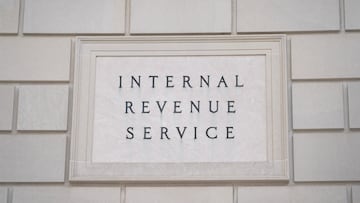These are the new federal income tax brackets for 2026: How the “Big Beautiful Bill” adjustments affect you
In a statement this week, the IRS has announced the U.S.’s federal income-tax thresholds for the 2026 tax year.


The U.S.’s Internal Revenue Service (IRS) this week revealed next year’s federal income-tax brackets, as part of the agency’s latest inflation adjustments.
In a press release issued on Thursday, the IRS announced the following taxable-income thresholds for the 2026 tax year:
2026 tax brackets - single filers
- 10%: $0 to $12,400
- 12%: $12,401 to $50,400
- 22%: $50,401 to $105,700
- 24%: $105,701 to $201,775
- 32%: $201,776 to $256,225
- 35%: $256,225 to $640,600
- 37%: Over $640,600
2026 tax brackets - married joint filers
- 10%: $0 to $24,800
- 12%: $24,801 to $100,800
- 22%: $100,801 to $211,400
- 24%: $211,401 to $403,550
- 32%: $403,551 to $512,450
- 35%: $512,451 to $768,700
- 37%: Over $768,700
Why does the IRS adjust its tax brackets?
Each year, the IRS revises its tax bands to avoid what’s known as ‘bracket creep’ - when inflation pushes people into a higher tax bracket.
This can occur if a worker’s salary is adjusted upwards to keep pace with the rising cost of living, only for the pay hike to trigger an increase in the rate of tax they’re charged on part of their taxable income.
The Tax Foundation, a non-partisan tax-policy think tank based in Washington D.C., stresses that you “aren’t richer” when your pay only goes up in step with inflation.
“A cost-of-living adjustment simply helps ensure you can purchase the same amount of goods and services over time, but without also making the same inflation adjustments to the tax system, taxes will take a larger bite out of your income over time,” the Tax Foundation says.
As predicted in September by Bloomberg Tax & Accounting, the IRS appears to have applied a 2.7% rate of inflation to its new federal income-tax brackets in 2026.
Under the provisions of the so-called “One Big Beautiful Bill” (OBBB), the Republican-backed tax and spending legislation signed into law by President Trump in July, the rates charged in each tax band have been kept in place.
Notably, the top bracket was due to rise to 39.6%, but will now remain at 37%.
What are the IRS’s federal income-tax brackets for 2025?
2025 tax brackets - single filers:
- 10%: $0 to $11,925
- 12%: $11,926 to $48,475
- 22%: $48,476 to $103,350
- 24%: $103,351 to $197,300
- 32%: $197,301 to $250,525
- 35%: $250,526 to $626,350
- 37%: Over $626,350
2025 tax brackets - married joint filers:
- 10%: $0 to $23,850
- 12%: $23,851 to $96,950
- 22%: $96,951 to $206,700
- 24%: $206,701 to $394,600
- 32%: $394,601 to $501,050
- 35%: $501,051 to $751,600
- 37%: Over $751,600
As is pointed out by CBS’s personal-finance expert Aimee Picchi, a single filer with a taxable income of $50,000 a year would pay a top rate of 22% in 2025. However, the revised brackets for 2026 would push this annual taxable amount down to a maximum rate of 12%.
Remember: If you’re in a bracket above the minimum tax rate, you only pay a higher rate on the portion of your earnings that exceeds each band’s threshold. For example, a single filer with a taxable income of between $50,401 and $105,700 in 2026 would be charged: 10% on the first $12,400; 12% on the next $38,000; and 22% on the remainder.

How the standard deduction will rise in 2026 (and 2025)
One way to reduce your taxable income is to claim the IRS’s standard deduction - a fixed dollar amount that eligible filers can apply as a deductible expense “no questions asked”, says the tax-advice service TurboTax.
You can’t get the standard deduction if you’re already claiming itemized deductions. Some other taxpayers are also ineligible; check out this IRS breakdown for more details.
In 2026, the IRS’s standard deduction for single filers will rise to $16,100, while married joint filers will see their fixed deductible amount increase to $32,200. The OBBB has also upped the standard deduction for the 2025 tax year: from $15,000 to $15,750 for single filers, and from $30,000 to $31,500 for married couples filing jointly.
Take a look at the IRS’s 2026 adjustments in full.
Related stories
Get your game on! Whether you’re into NFL touchdowns, NBA buzzer-beaters, world-class soccer goals, or MLB home runs, our app has it all.
Dive into live coverage, expert insights, breaking news, exclusive videos, and more – plus, stay updated on the latest in current affairs and entertainment. Download now for all-access coverage, right at your fingertips – anytime, anywhere.


Complete your personal details to comment